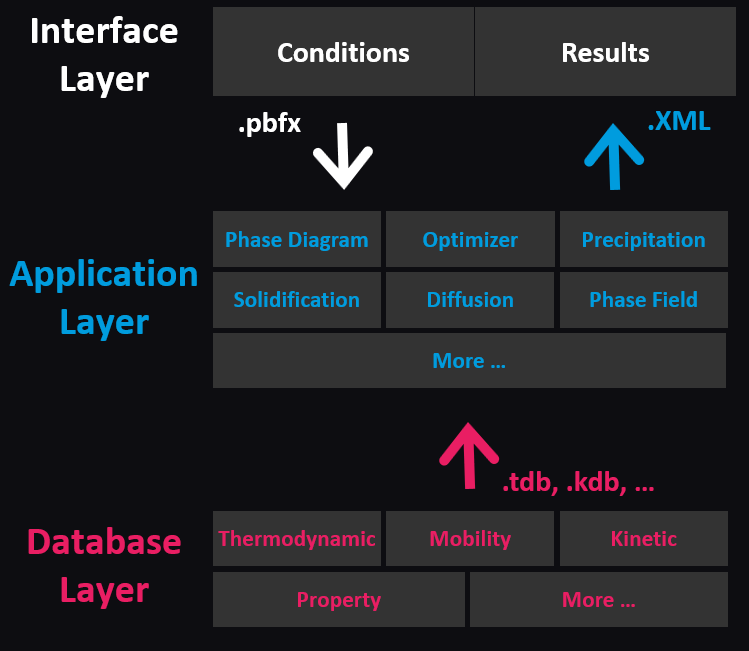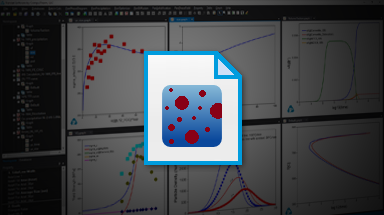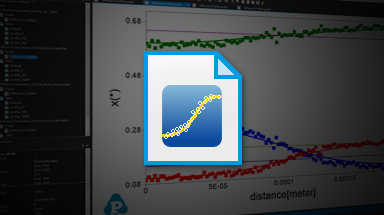
Three-Layered Architecture
The architecture of Pandat software consists of three layers: the interface layer, the application layer, and the database layer. This type of architecture leads to the good extendibility and maintainability of Pandat software. It allows for the parallel development of individual layers and having different experts focus on each of these three layers significantly increases the overall quality of Pandat. This reduces any subsequent development efforts, minimizes the maintenance workload and decreases migration costs when switching client applications, e.g., from a conventional desktop application to a web application.
Modular Design
Pandat software adopts modular design and currently includes 6 modules: PanPhaseDiagram for phase diagram and thermodynamic property calculation, PanEvolution for precipitation and recrystallization simulation, PanDiffusion for diffusion simulation, PanSolidification for solidification simulation, PanOptimizer for property optimization and PanPhaseField for phase field simulation. This unique design enables users to easily switch between modules and perform variety types of simulations in the same workspace. Pandat software has a robust calculation engine and a friendly graphical user interface, and it is known as the most reliable and easy to use software in this field.

- stable and metastable diagrams
- property contour diagrams
- thermodynamic properties
- chemical driving force
- particle concurrent nucleation, growth and coarsening
- multi-phase co-precipitation
- precipitation and grain growth
- recrystallization and grain growthnew
- diffusion couple
- homogenization
- carburization and decarburization
- particle dissolution
- Optimization of thermodynamic, kinetic and thermo-physical model parameters using experimental data
- solidification path
- back-diffusion in the solid
- dendrite arm coarsening
- micro-segregation
- direct coupling with CALPHAD
- feasible for multi-component alloys
- open architecture for user’s model plugin







